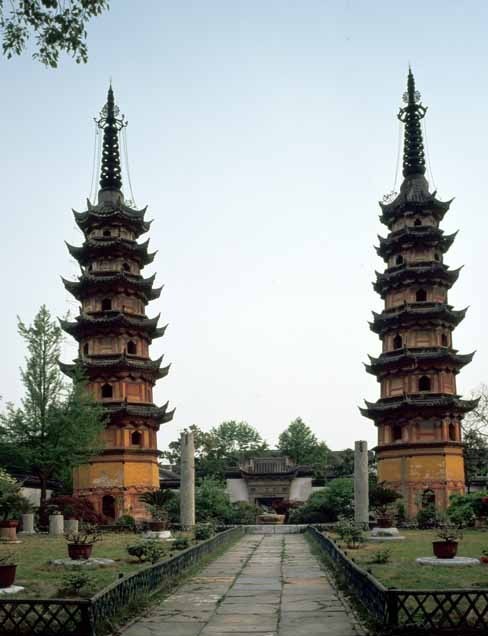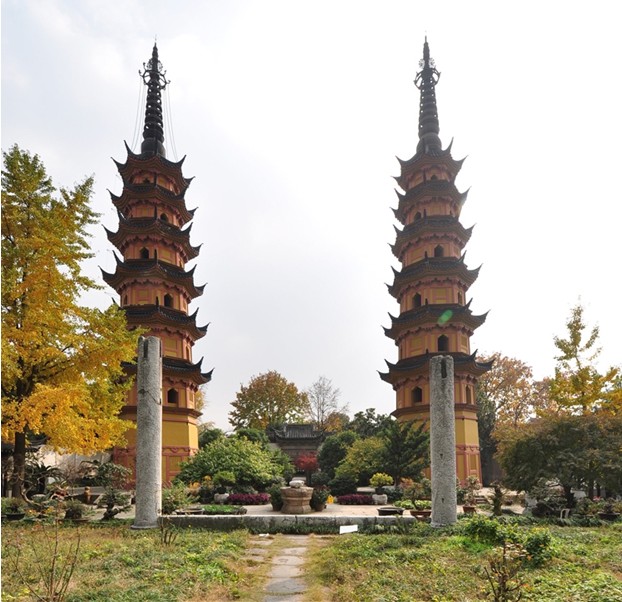The Twin Pagodas


The Twin Towers in Suzhou are considered the best-preserved twin pagodas built in early times in China. It is part of the Arhat Temple complex.
Dinghui Lane in southeastern Suzhou, where the twin pagodas were built, is now called Shuangta (Twin Pagodas) Lane. The two pagodas can be dated back to the Northern Song Dynasty over one thousand years ago. According to historic accounts, the pagodas, once called Sarira Stupa and the other Sarira Stupa of Merits and Benevolence, were built in 982 during the Song Dynasty by the Wang brothers from Wuxian County.
The twin pagodas, both built of brick, are almost exactly the same in size, structure and form. They both have eight sides and seven floors and are more than thirty meters high. There are four doors, facing four directions, on each storey; the other four sides have false windows carved on the walls. Above the doors and windows brackets were installed to support the projecting eaves, which consist of six layers of bricks with every other layer having serrated edges. With a distinct curve and upturned eaves, the pent roofs of the pagodas were built in the architectural style typical of southern China. The balconies encircling each storey were built of brick above the pent roofs of the lower level.
Inside the pagodas people may reach the upper storey by movable staircases, similar to those in Huqiu Pagoda. The interior rooms on each level are all square, except for the second storey, which is octagonal. But since each storey is staggered 45 degrees from the lower storey, the interior of the pagoda on the whole still has eight angles. The doors and windows on each storey are also staggered to prevent vertical splitting. The steeple, proportionally large, is made of iron and occupies about one fourth of the total height of the pagoda. This structure is rare among ancient pagodas in China.
Location: No.22 Dinghui Lane, Changliang District, Suzhou
Entrance Fee: RMB 8
Transportation: Bus No.2,40,50,55,89,200,202,204,309,501,259 or 811.













